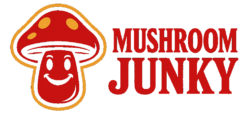Mushroom foraging is the practice of searching for and collecting wild mushrooms. It has been gaining popularity in recent years as more people seek to reconnect with nature and enjoy the bounty of the forest. Whether you’re a foodie looking to explore new ingredients, using mushrooms to reduce inflammation, or simply seeking a new hobby, mushroom foraging can be a rewarding and exciting experience.
However, it’s important to approach mushroom foraging with caution, especially if you’re new to the activity. While many mushrooms are edible and delicious, others can be toxic or even deadly if consumed. Proper identification is key, and there are a number of safety considerations to keep in mind when setting out to forage for mushrooms.
In this guide, we’ll cover the basics of mushroom foraging for beginners, from defining what it is and why it’s important to be cautious, to providing tips on identifying edible versus poisonous mushrooms and selecting the best places to find them.
Top Tips When Mushroom Foraging For Beginners
These tips will help increase your chances of success while staying safe and avoiding potential pitfalls:
- Research local laws and regulations: Some parks or protected areas restrict or prohibit mushroom foraging. Check the rules to avoid fines or issues.
- Know where to look: Different mushrooms grow in specific environments. For example, chanterelles grow near oak trees, while morels favor dead trees.
- Identify edible vs. poisonous mushrooms: Always double-check identification using field guides or expert advice. When in doubt, don’t eat it.
Best Places to Find Edible Mushrooms
Ideal environments for mushroom foraging include:
- Soil Type: Nutrient-rich, moist, organic soil is best.
- Temperature: Cooler temperatures favor morels; warmer spots favor chanterelles.
- Habitat: Deadwood for oysters, living trees for others. Research your target mushroom species.
Remember to forage responsibly and avoid damaging the ecosystem.
Identifying Poisonous Mushrooms
Proper identification is critical. Many poisonous mushrooms closely resemble edible ones.
Examples include:
- Death Cap: Often mistaken for edible varieties. Greenish-yellow cap, white gills, bulbous base.
- Destroying Angel: White cap and gills, deadly toxic, mistaken for puffballs or meadow mushrooms.
Always check multiple characteristics: cap shape, gills, stem, spore color, and smell.
Mushroom Foraging Equipment
Essential gear includes:
- Basket: Open weave for airflow.
- Knife: Sharp, curved blade for clean cuts.
- Field Guide: Region-specific for accurate ID.
- Protective Gear: Gloves, boots, long pants.
- Optional: Magnifying glass, compass, GPS device.
Using Phone Apps to Identify Mushrooms
Apps like iNaturalist or Picture Mushroom can assist with ID. However, always cross-check with a trusted guidebook or expert.
Many apps also let you log finds and add notes, creating a valuable record of your foraging trips.
Cooking with Wild Mushrooms
Clean mushrooms carefully:
- Brush off dirt with a dry cloth or soft brush.
- Trim tough stems.
- If uncertain, have mushrooms identified by an expert before eating.
Recipe ideas:
- Creamy Mushroom Risotto: Sauté mushrooms, garlic, and onions. Cook with rice and broth. Add Parmesan and cream.
- Mushroom and Goat Cheese Tart: Puff pastry topped with goat cheese and sautéed mushrooms.
- Wild Mushroom Frittata: Eggs and herbs cooked with mushrooms in a skillet.
- Wild Mushroom Soup: Blend sautéed mushrooms with broth for a rich soup.
Mushroom Foraging Safety Tips
- Clothing: Waterproof boots, layers, gloves.
- Navigation: Map, compass, and/or GPS app.
- Tell someone: Share your plan and expected return time.
- Stay hydrated: Bring water and snacks.
- Be cautious: When in doubt, don’t eat unfamiliar mushrooms.
Mushroom Foraging for Beginners: Conclusion
Mushroom foraging is an exciting way to connect with nature, but requires knowledge, caution, and preparation.
Key takeaways:
- Research local laws before foraging.
- Know where different species grow.
- Use multiple methods to identify mushrooms accurately.
- Carry the right equipment and stay safe.
For more mushroom foraging tips, exclusive recipes, and expert advice, subscribe to our email newsletter!
